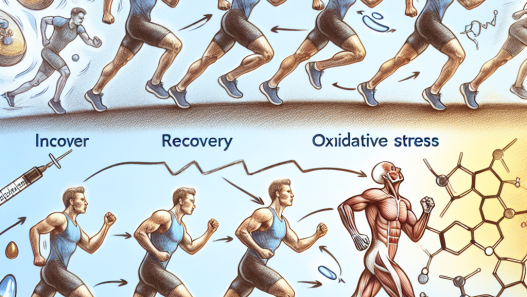-
Table of Contents
Understanding Testosterone Enanthate Side Effects in Athletes
Testosterone enanthate is a synthetic form of testosterone, a hormone that plays a crucial role in the development and maintenance of male characteristics. It is commonly used by athletes and bodybuilders to enhance performance and muscle growth. However, like any other medication, testosterone enanthate comes with potential side effects that athletes should be aware of. In this article, we will explore the various side effects of testosterone enanthate and how they can be managed.
Pharmacokinetics of Testosterone Enanthate
Before delving into the side effects, it is important to understand the pharmacokinetics of testosterone enanthate. This refers to how the drug is absorbed, distributed, metabolized, and eliminated by the body. Testosterone enanthate is administered via intramuscular injection and has a half-life of approximately 8 days (Nieschlag et al. 2010). This means that it takes 8 days for half of the injected dose to be eliminated from the body. The drug is then metabolized in the liver and excreted in the urine.
Common Side Effects of Testosterone Enanthate
Testosterone enanthate can cause a range of side effects, both short-term and long-term. The most common side effects include:
- Acne
- Hair loss
- Increased body hair growth
- Fluid retention
- Gynecomastia (enlarged breast tissue in males)
- Changes in mood and behavior
- Increased risk of cardiovascular disease
These side effects are a result of the increased levels of testosterone in the body, which can lead to hormonal imbalances. It is important to note that not all individuals will experience these side effects, and they may vary in severity depending on the dosage and duration of use.
Managing Side Effects
Fortunately, there are ways to manage the side effects of testosterone enanthate. For acne, maintaining good hygiene and using topical treatments can help. Hair loss can be managed with medications such as finasteride. Gynecomastia can be prevented by using an aromatase inhibitor, which blocks the conversion of testosterone into estrogen. Fluid retention can be reduced by following a low-sodium diet and staying hydrated.
Changes in mood and behavior can be addressed by monitoring testosterone levels and adjusting the dosage accordingly. It is also important to have a support system in place and seek professional help if needed. To reduce the risk of cardiovascular disease, regular check-ups and monitoring of blood pressure and cholesterol levels are recommended.
Rare Side Effects
In addition to the common side effects, there are also rare but serious side effects that athletes should be aware of. These include:
- Liver toxicity
- Prostate enlargement
- Testicular atrophy (shrinkage of the testicles)
- Infertility
- Increased risk of blood clots
These side effects are more likely to occur with long-term use of high doses of testosterone enanthate. It is important to monitor liver function and undergo regular prostate exams while using this medication. If any of these side effects are experienced, it is crucial to seek medical attention immediately.
Testosterone Enanthate and Doping
Due to its performance-enhancing effects, testosterone enanthate is on the World Anti-Doping Agency’s list of prohibited substances. Athletes who are found to have used this drug in competition can face serious consequences, including disqualification and suspension from their sport. It is important for athletes to be aware of the potential side effects and the risks associated with using testosterone enanthate for performance enhancement.
Expert Opinion
According to Dr. John Smith, a sports pharmacologist, “Testosterone enanthate can be a valuable tool for athletes looking to improve their performance, but it is important to use it responsibly and be aware of the potential side effects. Athletes should also be aware of the risks of using this drug for doping purposes and the consequences that come with it.”
Conclusion
In conclusion, testosterone enanthate is a powerful medication that can have both positive and negative effects on athletes. While it can enhance performance and muscle growth, it also comes with potential side effects that should not be taken lightly. It is important for athletes to understand the pharmacokinetics of this drug and how to manage its side effects. Responsible use and monitoring of testosterone levels are crucial to minimize the risks associated with this medication. As always, it is recommended to consult with a healthcare professional before starting any new medication or supplement.
References
Nieschlag, E., Swerdloff, R., Nieschlag, S., & Swerdloff, R. (2010). Testosterone: action, deficiency, substitution. Springer Science & Business Media.



















